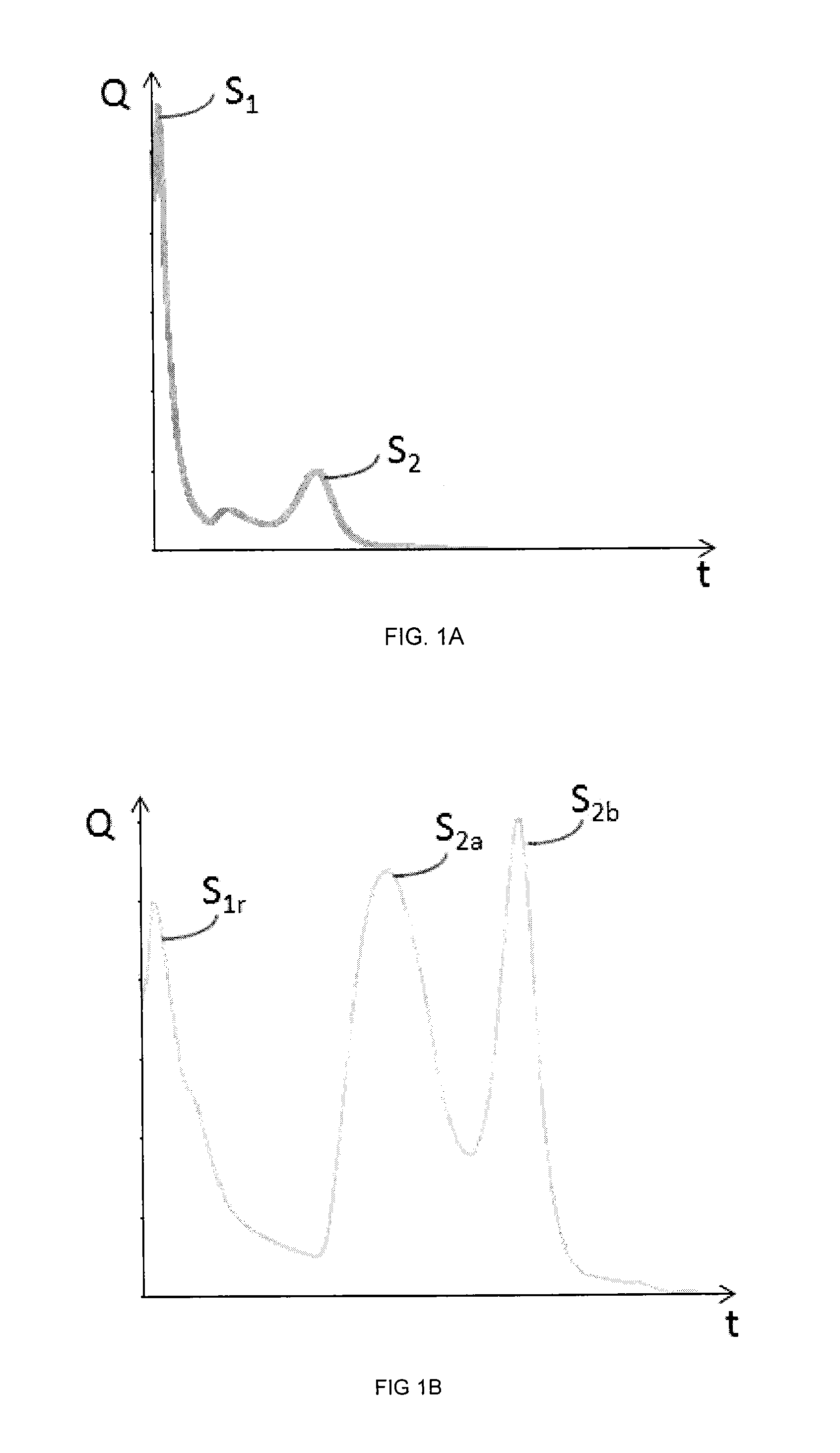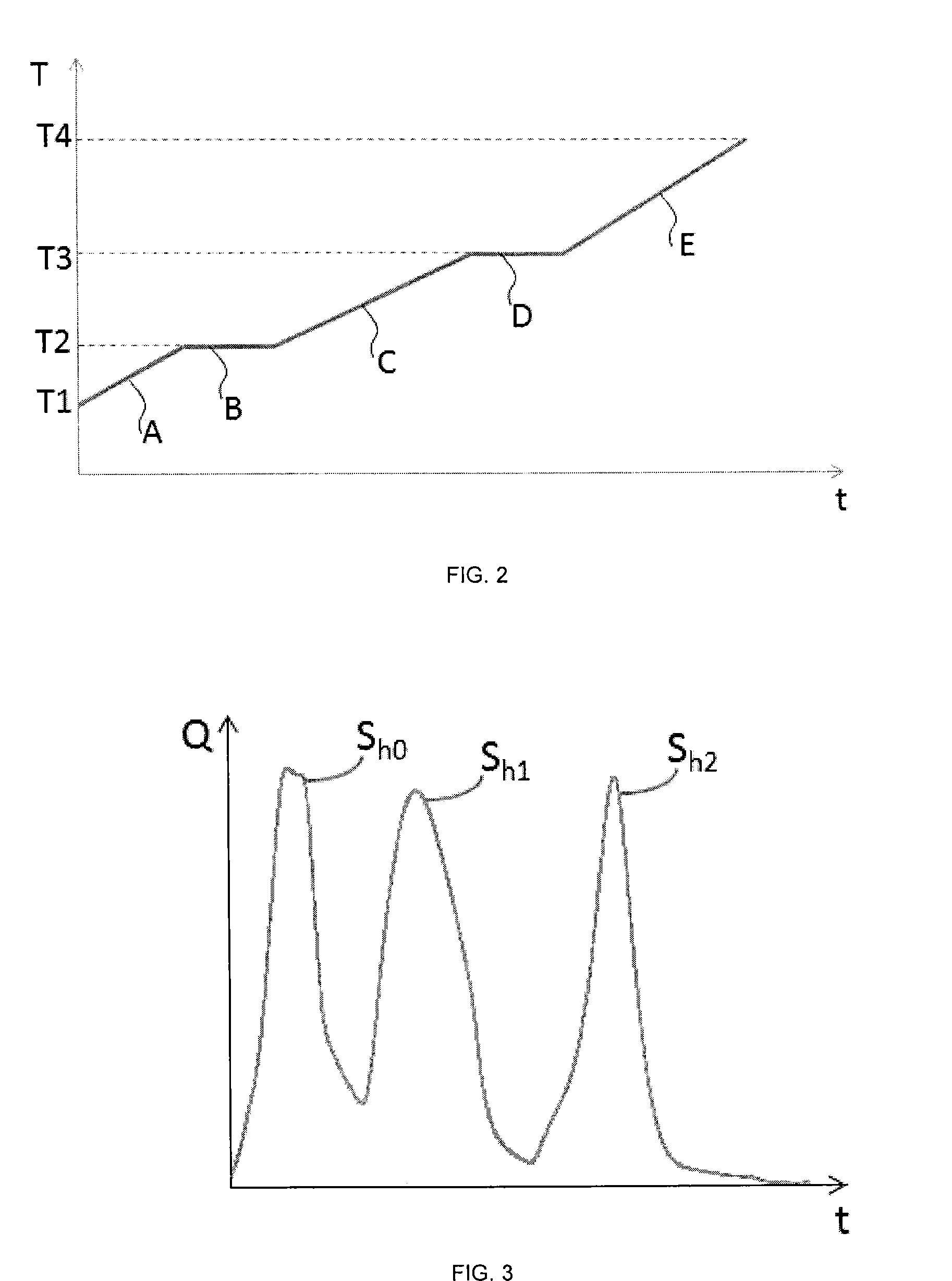Method of assessing at least one petroleum characteristic of a rock sample
- Summary
- Abstract
- Description
- Claims
- Application Information
AI Technical Summary
Benefits of technology
Problems solved by technology
Method used
Image
Examples
application examples
[0087]Table 1 compares the results obtained with the method according to the invention (referred to as Method 1) and the Reservoir method (referred to as Method 2) on three rock samples (referred to as sample A, B and C) from different hydrocarbon source rock types. In the case of the Reservoir method, equivalences denoted by HC*cont, HQI* and PI*Shale for petroleum characteristics HCcont, HQI and PIShale defined above for the method according to the invention were calculated as follows:
-HCcont*=S1r+S2a;-HQI*=S1rS1r+S2a×100;-PIShale*=(S1r+S2a)(S1r+S2a+S2b)×100.
[0088]According to this table, it can be observed that, whatever the sample under consideration, the value of the petroleum characteristic HCcont obtained with the method according to the invention is greater than its equivalent HC*cont obtained with the Reservoir method. Indeed, as shown in Table 1, characteristic HCcont is 30% greater than its equivalent HC*cont in the case of sample A, 40% in the case of sample B and 28% in...
PUM
 Login to View More
Login to View More Abstract
Description
Claims
Application Information
 Login to View More
Login to View More - R&D
- Intellectual Property
- Life Sciences
- Materials
- Tech Scout
- Unparalleled Data Quality
- Higher Quality Content
- 60% Fewer Hallucinations
Browse by: Latest US Patents, China's latest patents, Technical Efficacy Thesaurus, Application Domain, Technology Topic, Popular Technical Reports.
© 2025 PatSnap. All rights reserved.Legal|Privacy policy|Modern Slavery Act Transparency Statement|Sitemap|About US| Contact US: help@patsnap.com



